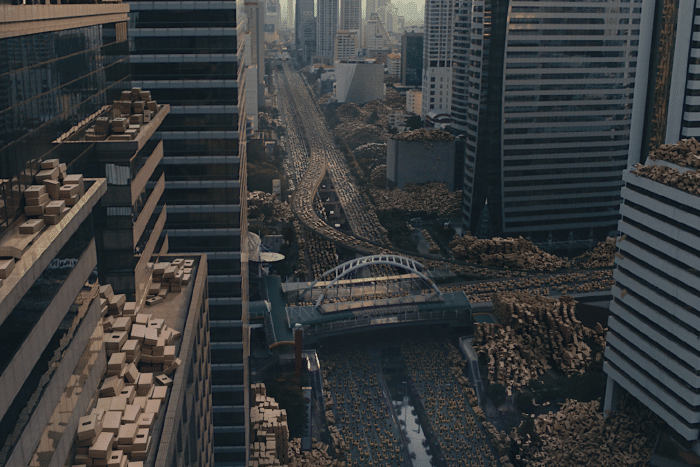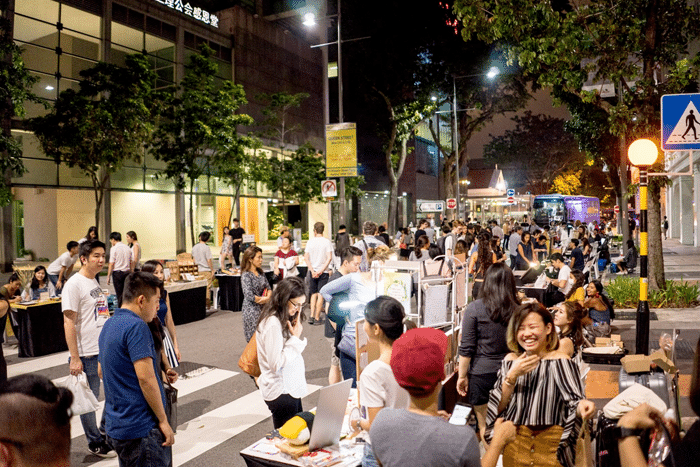Is Ride Sharing The Solution to Asia’s Horrible Traffic Congestions?
PUBLISHED December 6th, 2017 08:17 am | UPDATED May 18th, 2020 05:35 pm
In the span of eight years, what used to be a cool German slang used by teenage punks and tech geeks has become something else entirely: a global ride sharing company that now operates in more than 700 cities. Uber – which is based in California – has come a long way, evolving from its initial model of private black cars-for-hire to allowing people to drive using their own cars. Then came the revolutionary carpooling service UberPOOL, and now with UberEATS, 15 minutes is all it takes to get an avocado salad delivered to your door.
Our point is, everyone knows Uber. Heck, even many of our grandparents would have heard, or are even possibly regular users of the app. In Singapore, a city already plagued with less-than-agreeable traffic conditions, what is its impact on the country?
As fervent travellers with a penchant for Asia, we know all too well how traffic conditions can affect your experience of a place. In Mumbai and Delhi, you’d think that the incessant honking is almost mandatory, as two-wheeler tuk-tuks weave in and out of traffic to eventually be halted by, yes, impossible traffic. Folks in Manila have it just as bad, as hours and income opportunities are lost to congestions. And don’t get us started on Bangkok and Jakarta.
Unsurprisingly, many car owners in Singapore are now questioning whether they should own a car at all, as vehicle growth rate has been cut to zero in face of limited expansion of the road network, making it even more expensive to own one. An Uber-commissioned survey across nine of Asia’s largest cities shows that the average driver spends around 26 minutes each day searching for parking, and approximately 52 minutes stuck in traffic congestions. That adds up to a staggering 13 days each year.

All over YouTube and social media, you might have seen Uber’s latest short film Boxes (watch it above), which humorously depicts the absurdity of how people get around in a city – using cardboard boxes to represent cars. Its message is simple: if the situation continues as it is, traffic in Asia’s cities risk coming to a complete standstill in just a few years. The video, which is part of Uber’s first ever brand purpose campaign Unlocking Cities, was further perpetuated by a group of influencers across the region who shared their personal stories about their traffic struggles. Here in Singapore, we saw the likes of Zong Zijie and Derrick Hoh among plenty others, who took to the net to vent their dissatisfaction.
Is ride sharing part of the solution to Asia’s traffic congestions? It’s certainly probable. With more people opting to ditch their cars and turn to ride-sharing, we might just start seeing fewer vehicles on the road and eventually, parking lots converted into all kinds of positive spaces – from parks and sports facilities to exciting arts venues. And sure, we wouldn’t mind more commercial buildings for restaurants and bars as well.

To imagine what life would be like in a Singapore with just 40% fewer cars, take a look at the Urban Redevelopment Authority’s Car-Free Sunday initiative, which shuts down roads in the Civic District and CBD on the last weekend of every month to facilitate activities for pedestrians and cyclists. Then, there is the annual PARK(ing) Day curated by creative placemakers Shophouse & Co, which transformed 166 carpark spaces around Bugis, Kampong Glam, Little India and Tiong Bahru into activity areas with music performances, interactive art installations, and more in September this year. Likewise, LOPELAB has been taking over public spaces, including Keong Saik Road and Queen Street, for a series of activations for arts, culture, and music since 2015.
When it comes to tourism, fewer or even no traffic congestions will undoubtedly lead to more favourable travel experiences for travellers. Ride-sharing has the potential to create social conversations in cars, and makes for more affordable and reliable rides. And what do you mean I no longer have to wake up at 5am to beat the rush hour to the airport? By putting more people into fewer cars, like Uber does, the full potential of cities in Asia can be completely unlocked. And when that happens, you can be sure we’ll be there.
What are other possibilities are there in a world with more ride sharing and fewer cars? Tell us in the comments below. Learn more about Unlocking Cities here.
This post is sponsored by Uber.
